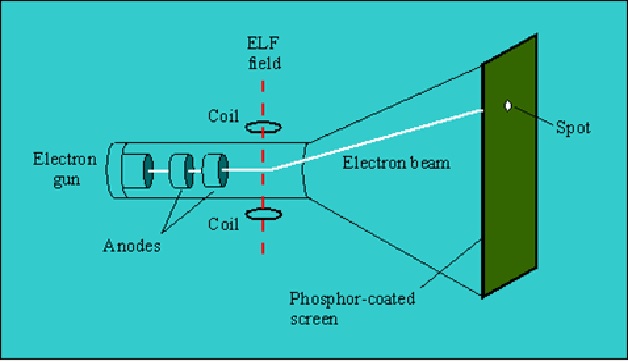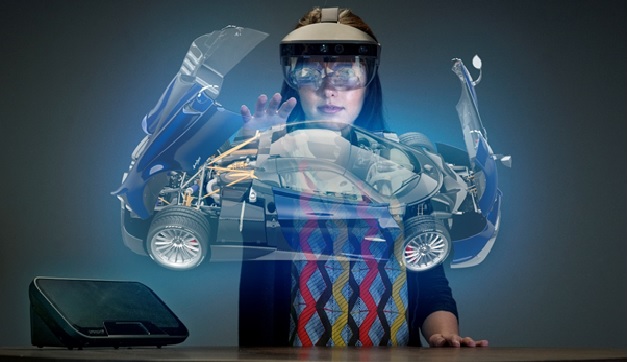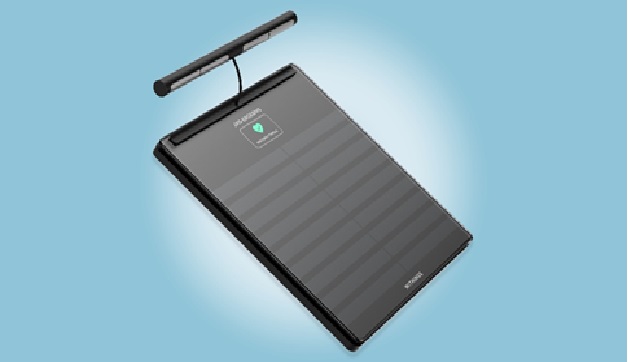Overview of Cathode Ray Tube (CRT)
A cathode-ray tube (CRT) is a specialized vacuum tube in which images are produced when an electron beam strikes a phosphorescent surface. Most desktop computer displays make use of CRTs. The CRT in a computer display is similar to the "picture tube" in a television receiver.
A cathode-ray tube consists of several basic components, as illustrated below. The electron gun generates an arrow beam of electrons. The anodes accelerate the electrons. Deflecting coils produce an extremely low frequency electromagnetic field that allows for constant adjustment of the direction of the electron beam. [2]

Figure 1. Overview of Cathode Ray Tube (CRT)
Figure 1 shows the working of CRT depends on the movement of electrons beams. The electron guns generate sharply focused electrons which are accelerated at high voltage. This high-velocity electron beam when strikes on the fluorescent screen creates luminous spot. [3]
Components of CRT:
Main Components of CRT are:
- Electron Gun: Electron gun consisting of a series of elements, primarily a heating filament (heater) and a cathode. The electron gun creates a source of electrons which are focused into a narrow beam directed at the face of the CRT.
- Control Electrode: It is used to turn the electron beam on and off.
- Focusing system: It is used to create a clear picture by focusing the electrons into a narrow beam.
- Deflection Yoke: It is used to control the direction of the electron beam. It creates an electric or magnetic field which will bend the electron beam as it passes through the area. In a conventional CRT, the yoke is linked to a sweep or scan generator. The deflection yoke which is connected to the sweep generator creates a fluctuating electric or magnetic potential.
- Phosphorus-coated screen: The inside front surface of every CRT is coated with phosphors. Phosphors glow when a high-energy electron beam hits them. Phosphorescence is the term used to characterize the light given off by a phosphor after it has been exposed to an electron beam. [1]
CRT Display
A CRT display is a type of display device that uses one or more electron beams to produce images. They feature a layer of phosphor compounds, which serves as the pixel layer. To produce images, CRTs strike the phosphor compounds with electrons. Electrons essentially excite the phosphor compounds, causing them to illuminate so that an image is produced.
CRT displays are also known as picture tubes. This is because their electron gun or guns are placed in a vacuum tube. The vacuum tube allows the electron gun or guns to shoot the phosphor compounds from behind. [4]
References:
- https://www.javatpoint.com/computer-graphics-cathode-ray-tube
- https://whatis.techtarget.com/definition/cathode-ray-tube-CRT
- https://circuitglobe.com/cathode-ray-tube-crt.html
- http://www.nelson-miller.com/the-end-of-cathode-ray-tube-crt-displays/
Cite this article:
Thanusri swetha J (2021) Overview of Cathode Ray Tube (CRT), AnaTechMaz, pp. 42















